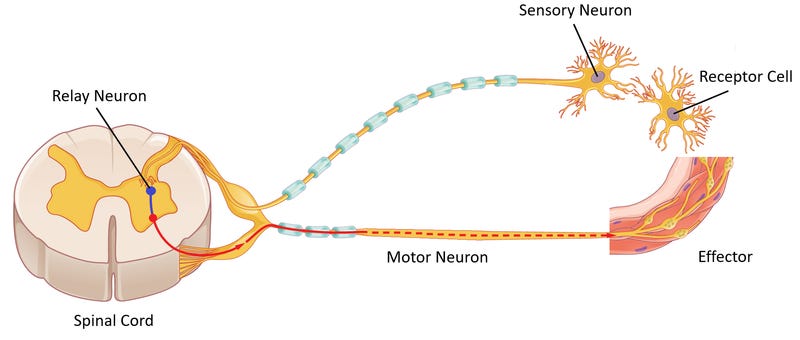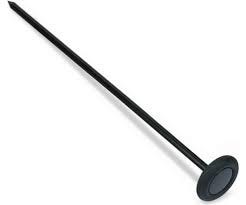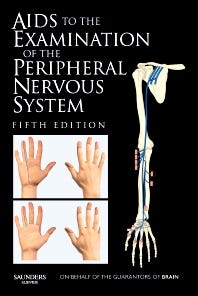Tendon reflexes you need to know
This reviews the tendon reflexes you need to know and how to elicit them.
When you watch medical students and junior doctors do the neurological examination you can usually spot those who are well trained by how they do the tendon reflexes. It takes skill and training to look slick at doing the reflexes. The cackhanded look amateur. So please do them regularly and think when you do them. When doing each reflex remind yourself of the motor roots, peripheral nerve and muscle being examined. Always look at the muscle body being tested and compare each side.
A large number of people test the reflexes after doing tone and power. I prefer to wait until after the sensory examination. Why? A tendon reflex has an afferent (sensory) and efferent (motor) limb and you really need to know what is happening in both limbs of the reflex arc to interpret the reflexes.

In general, absent or reduced reflexes are due to lower neurone pathology and brisk reflexes due to upper motor neuron pathology. However, some people have very hard to elicit reflexes and are normal and some people have brisk reflexes and are normal. Even clonus can be normal and is seen after vigorous exercise and in states of high circulating catecholamines, for example, after running a sprint race or after a fright.
Similarly, loss of the ankle jerk happens with age and is considered normal in older patients, i.e. those older than about 60 years of age.
I am often asked what reflex hammer you should use. In the UK the Queen Square hammer predominates, but it doesn’t really matter which one you use.
In 1888, J. Madison Taylor, working at the Philadelphia Orthopedic Hospital, designed the first "reflex hammer." Taylor's hammer had a triangular rubber head and a short, flattened metal handle. Since then there have been numerous variations including Krauss, Berliner, Troemner, Babinski and Wintle who all designed popular reflex hammers. The use of these hammers tends to be cultural.
The Queen Square hammer was modelled on the Vernon chest percussion hammer which dates back to 1858. The modification of the Vernon hammer to what is now known as the Queen Square version dates back to around 1925 and is attributed to Miss Wintle who was the head nurse of physiotherapy and radiology at the National Hospital for Nervous Diseases, Queen Square.
If you are interested in the history of tendon hammers I suggest you read the article below.
I would strongly recommend you use the ‘Aids to the examination of the peripheral nervous system’ on behalf of the Guarantors of Brain as your guide. You can either download a free earlier version or purchase the latest edition.
Tendon reflexes
As a medical student I would expect you to know about and be proficient in eliciting the following tendon reflexes:
Biceps (musculocutaneous) - C5-6
Brachioradialis (radial) C5-6
Triceps (radial) C6-C8
Pectoral (medial and lateral pectoral nerves) C5-8
Supinator (radial) C6-7
Quadriceps or Patellar (Femoral) L3-4
Hip Adductor (Obturator) - L2-3
Hamstrings (Sciatic) - L5-S1
Ankle (posterior tibial) S1
Please note all tendon reflexes have more than one root except the ankle jerk. Don’t forget this.
Grading reflexes
0: absent reflex
1+: trace, or seen only with reinforcement or facilitation
2+: normal
3+: non-sustained clonus
4+: sustained clonus
Article of interest
Lanska. The history of reflex hammers. Neurology. 1989 Nov;39(11):1542-9.
Following the simultaneous description of muscle stretch reflexes by Heinrich Erb and Carl Westphal in 1875, neurologists used direct finger taps or chest percussion hammers to elicit these phenomena. Because of inadequacies of chest percussion hammers for eliciting muscle stretch reflexes, a variety of hammers were developed specifically for this purpose. In 1888, J. Madison Taylor, working for S. Weir Mitchell at the Philadelphia Orthopedic Hospital, designed the first such "reflex hammer." Taylor's hammer had a triangular rubber head and a short, flattened metal handle. Krauss (1894), Berliner (1910), Troemner (1910), Babinski (1912), and Wintle (1925) also designed popular reflex hammers. Many of these hammers and several others are still in use.


